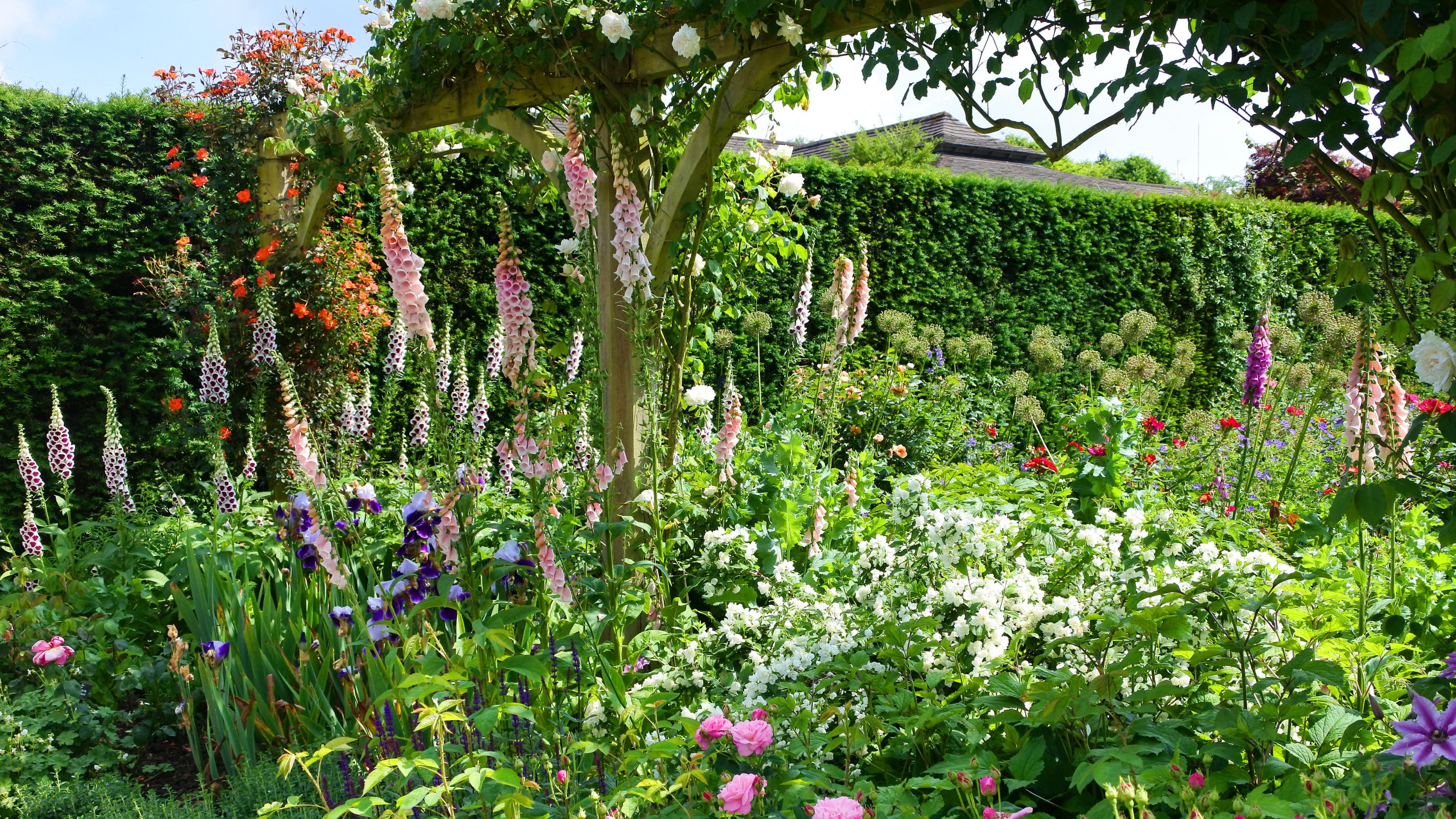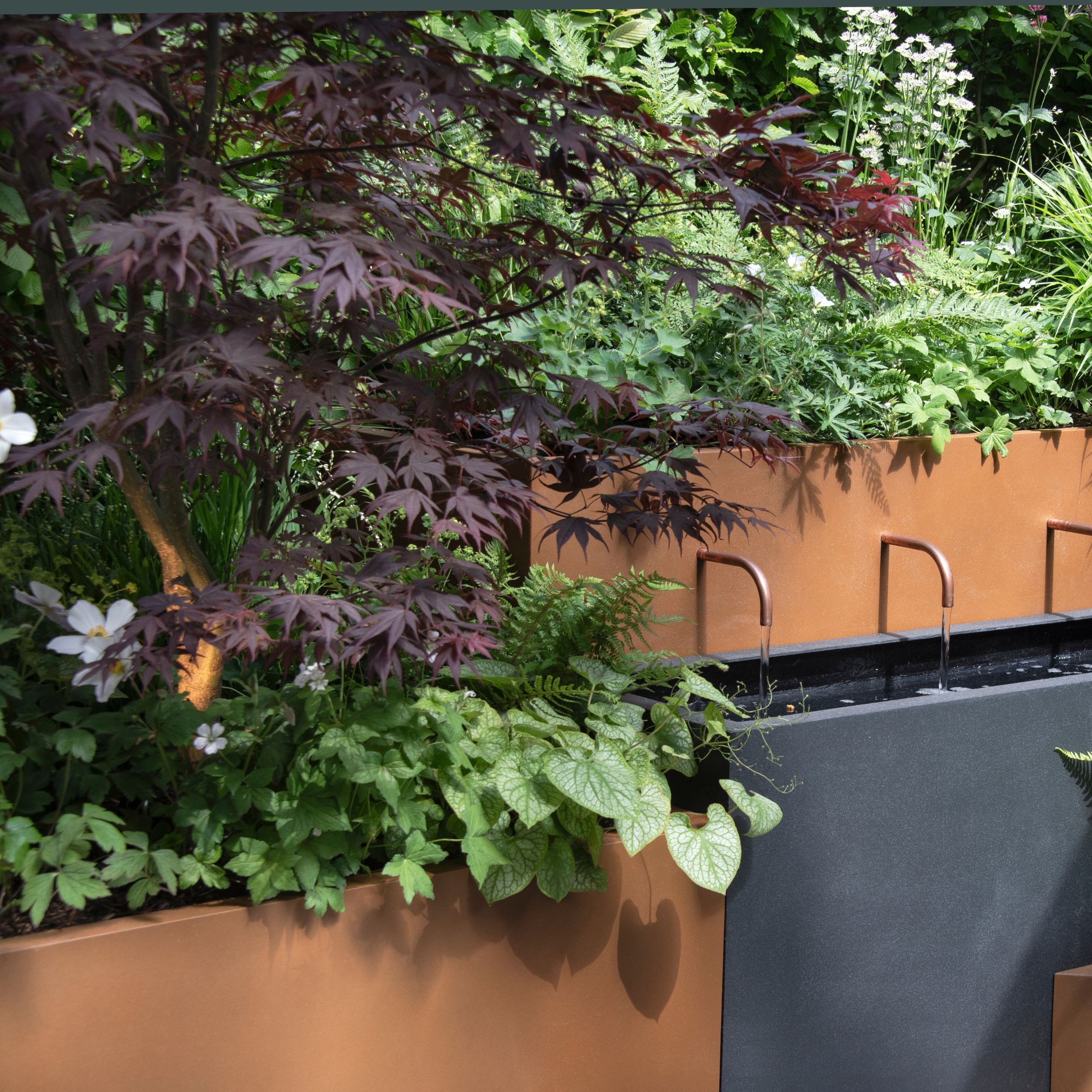I've learned these 3 things about safely moving established plants from the RHS's chief horticulturalist – and here's what you should consider if you plan to do the same
Healthy plant in the wrong spot? Fear not! Here’s how to rehouse some of the stars of your garden

When we moved house in October 2024, the garden was a big part of the appeal. The house (lovely though it is) requires a lot of work, which is about to start, resulting in our family (including a two-year-old and three furry family members) moving out.
The garden, on the other hand, can be totally overhauled if we desire it (being a fairly blank canvas) or can be left as is. There is a large lawn, and the garden is surrounded by several established shrubs, trees and bushes which give privacy, and also offer a home to plenty of garden wildlife. So far, so good!
However, part of the upcoming renovations involves demolishing the lean-to conservatory, which currently borders a flower bed brimming with life. That bed might look modest at first glance, but it holds a beautiful mix of perennials, including a carpet of bluebells, which offered colour – and food for essential pollinators – in early spring. The thought of them being flattened or lost is a no-go for me, so we’re planning to carefully rehome them, along with other mature plants from that bed, as well as a circular one in the centre of the lawn.
Here’s what I’ve learned so far about successfully moving established plants – and what you should consider if you're doing the same.
It all depends on plant type
Firstly, can the plants actually be moved? There are some types that dislike being disturbed once they are in situ – thankfully for me, bluebells don’t fall in this category.
As they grow from corms (similar to a bulb), they can be relatively easily lifted and moved, without the risk of too much damage to the plants. We will also be moving a small Acer, which can be trickier to master, but as it is still a fairly compact specimen, I am hopeful that with the right care, it will be a success.
Finding the perfect spot
The next thing you will need to think about is the type of environment your plants will require, and where in your garden you can offer this. Bluebells like a sunny spot offering partial shade, with well-drained soil.
Sign up to our newsletter for style inspiration, real homes, project and garden advice and shopping know-how
Think of their natural habitat, carpeting the floors in woodland areas. As we are north-facing, we can thankfully tick a lot of these boxes without too much effort on our part, but we will need to ensure the plants don’t get totally smothered in more densely planted spaces.
The acer may be a trickier ask, due to the eventual spread and space requirements. It is looking like this may be moved to the front garden, which will take a bit more work, as the soil in our front garden needs a bit of amending, so that is a project for another day!
Timing is key
The best time to move your bluebells is just after they have finished flowering in late spring; however, if, like us, late summer to early autumn is the only option, this should be fine, too. For most plants, you want to be moving them when they are dormant (not in active growth).
This means autumn is a fairly safe bet for most types, but do make sure you check the dormant period for whatever you are hoping to move, so as not to accidentally kill it!

The RHS’s Guy Barter explains further, 'Native bluebells resent drying out, so replant soon after lifting. Spanish and hybrid bluebells are more obliging and can be lifted and then replanted when convenient. The bulbs can be hard to find, so lift after flowering and before they have quite disappeared below ground. Bluebells are apt to be a bit coarse and invasive, but do very well in wilder parts of the garden. Remember the legal restriction on lifting bluebells from the wild.'

Once again, the acer could be a trickier beast here as it is still in active growth at the moment, so our plan of action is to leave it as long as we can into the work, and only move while it is still in leaf if there is no other option.
If you do need to move a plant outside of its dormant period, Guy has some tips 'Water well before lifting, dig out, divide as required, replant in a pot - or if planting in open ground prepare a hole big enough to accommodate the plant or its divisions – fill the hole with water and allow it to drain a couple of times, then plant, water and firm well. Water at least every three days thereafter. In some cases, shortening the plant’s shoots by a third can help limit water loss. As long as it doesn’t dry out, the roots will grow quickly in warm soil.'
How to move established plants
Now comes the moving of the plants! You will only want to move healthy plants to their new home, so discard any that have shown signs of disease in the previous year, and dispose of them safely.

1. Prepare the transplant spot
Prepare the spot you will be moving the plant to in advance, if you can. Remove any large stones and weeds that will compete for vital resources. Depending on what you are planting, it can be a good idea to dig in some well-rotted compost or manure ahead of time to give the ground a bit of a nutrient boost. Dig a hole large enough to accommodate the root system of the plant you are moving, and give the soil a good watering.
As we are planting in front of some established trees, we were also dodging root systems, so once again, we're thankful we’re dealing with a rather forgiving type of flower that doesn’t mind a tree canopy!

Guy is the chief horticultural advisor at the Royal Horticultural Society (RHS)
2. Carefully dig out the plant
I used a garden fork (this Spear & Jackson digging fork, £26 from Amazon, gets my vote) to carefully dig out around each clump of bluebells.
It is important to leave the corms intact as much as you can, minimising damage, as this will allow you to move the plants without stressing them too much.
3. Move the plants to the new spot
Pop the plants into your pre-prepared holes as soon after digging up as possible, firm the soil back down, and give them a generous watering to help them settle into their new home.
It can take a while for plants to settle, but they should adapt well and offer you (and your garden pollinators) a beautiful and colourful display in years to come. It is a good idea to keep an eye on the plants after you have moved them, as they can show signs of stress, such as wilting leaves or a check in growth.
4. Look out for transplant shock
You will generally be able to establish pretty quickly if this is just transplant shock, or if there is actually something wrong that you need to attend to (such as soil conditions, watering requirements, etc).
We won’t know until spring if our transplants have been a success, but I am hoping I will be able to report back from my own beautiful and vibrant carpet of bluebells at the start of next year!
Top tips for moving established plants
- Timing is everything. Always move plants in their dormant period, where possible.
- Minimise damage to the root system/bulbs/corms. When you are digging the plant out, dig around the rootball to avoid spearing it.
- Think about placement. Check the soil (using a soil pH meter like this Sonkir pH meter, £9.99 from Amazon) and aspect where you will be planting are right for the type of plant you will be growing. Right plant, right place is key to success.
- Don’t move diseased plants. Transplanting will generally cause some stress to the plant, so only move those that are healthy.
- Water well and monitor as the plant settles.
There you have it! This is how I've moved established plants successfully and you can too.
Laura Hillier is an editor and content writer with more than 10 years of experience in horticulture and women's lifestyle journalism. Passionate about sustainability and the wellbeing benefits of being in the outside world, Laura is keen to inspire everyone to grab a little slice of the good life.
You must confirm your public display name before commenting
Please logout and then login again, you will then be prompted to enter your display name.